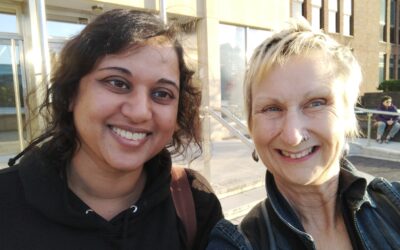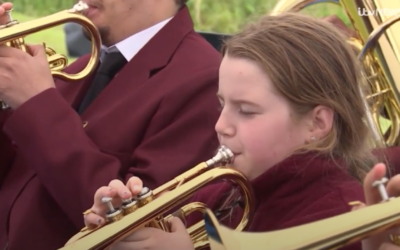
5 tips to make your bid writing pay off (whether you get the funding or not!)
Writing a bid for your community project does take time. However, I’m going to argue that it is time well-spent, whether you submit the bid or not. In fact ofttimes I’ve written a bid and realised that I didn’t need any money, just a decent plan. And that’s what a bid is – it’s a plan that will ensure the success of your project.
Here are 5 tips to make bid-writing both useful and satisfying – enjoy!
TIP 1
What change do you want to make? – This is the big question and tit can be hard to separate your passion for something from the actual social benefit. You know you love it – basket weaving, stray cat care, tomato growing, so others must as well, right? If it were that simple you would just put an ad out and invite people to join you to coppice willow, collect stray cats or grow tomatoes. Why not? Well those things all cost money so you need to fund it somehow, unless you are happy to pay for the whole thing yourself. You need willow or cat shelters or grow-bags. You need a space, people and insurance. And sadly just asking funders for money to make baskets or pickles or feed cats will not work. This is because they will ask “What is the return?”. What if the income generated by selling your baskets, cats or tomatoes is never likely to pay for the costs involved? At this point you have to dig into your project and ask what it is that people are likely to get out of it. Might you be giving people companionship? Or skills which might be useful elsewhere? Is there a social benefit of removing pesky stray cats from the streets or an environmental benefit in growing willow for your baskets on a stretch of riverbank? Having thought a bit more widely about your passion, you now have a good argument as to why funders would consider helping you. You can link your passion into a larger social need such as loneliness, wellbeing or inclusion. Don’t be frightened to use those terms. Any community group which offers group activities is reducing isolation. And as long as you take care to think how anyone in your community can be involved, you are being inclusive. So now you can start to flesh out your idea. Who do you want to join you and why? By answering these questions you can set yourself or your group a brief, or a challenge, such as
a. “We want to reduce social isolation by inviting local families to grow tomatoes for our community. They will learn how to grow food from seed and form a gardening community”
or
b. “This project will bring young volunteers together to build cat shelters and care for stray cats. In the process they will learn valuable building skills and cat-care skills”
or
“An area of canal bank is unsightly. We want to coppice willow for our basket-making. This will improve the environment and provide valuable skills”
Tip 2
Measuring success – So, you have your project. Next you want to think about the dreaded evaluation. This comes at the end of the project but don’t be fooled! It actually runs through the whole thing and it is the thing that enables you to feel good about what you have done. Good evaluation is good for stress! Plus funders need to know that their money is being well-spent and this should be easy once you have your project brief. Let’s take brief a.We want to reduce social isolation by inviting local families to grow tomatoes. They will learn how to grow food from seed and form a gardening community. At present you have, say, you and a friend and an idea. By the end of the project, you hope to have a tomato-growing community and tomatoes. This is your measure therefore. The evaluation will show the difference between the start and the end of the project. You might count all the people involved in the project, weigh all the tomatoes grown or count how much you make from selling the tomatoes to your community This is your quantitative data. Then you might have photos of people growing plants, quotes from participants and a newspaper article about the project. This is qualitative data, You can use all qualitative data in your promotional work by the way e.g. posters, social media posts etc.
Tip 3
Line up your ducks – You’ll need a project manager (that’s very likely to be you- don’t forget to charge for your time!) and you’ll need someone to manage the money (you again? Have you got time to do that? If not, find someone and ask them for a quote). If you don’t have a bank account for the group, now’s the time to get one, it’s essential for many funders. Now then, how many tomato growers do you aim to train / cat shelters do you want to build / willow trees do you want to manage? Do you need to bring in some expertise or do some training yourself? Check out some options, get some names. Do you need somewhere to build shelters, cultivate willow, store growing materials and/or meet up? List your contacts! Keep a database. What materials do you need and where will you keep supplies? Are there any safety measures, insurances to purchase or policies to write? Anything else you need? Don’t worry, you can always add things later if they come up.
Tip 4
Set your timetable – I love this part of the project. It really gives you a good feel for your project. Let’s take the cat shelter project (my personal favourite). You may set a 6 month period to build shelters for 10 cats and 6 months of care. You’ve appointed a builder who will train your volunteers. An architect has quoted for plans and you have permission to build in a perfect location. 5 teenagers from a local youth group want to help you build the shelters and learn building skills and 5 more have offered to care for the cats for the first 6 months. So get yourself a calendar and block in the different stages: planning meetings, building rota, launch day and cat care rota. This is so useful to see how practical the project is. You may find that the builder is on holiday in the middle of the project, that the participants play netball on the building days or that your planned launch date coincides with the football World Cup Final (this can happen – I organised a performance on a General Election Day once). As you write the timetable, other things come up, there’s an RSPCA very close by your chosen venue. The trainee builders will all need hard hats and some safety training. You will need to fundraise for cat food. This is all normal and shows you are thinking things through. Just add everything as if you lived in a perfect world. Do the research. If you need to hire a builder to work with young people, they will need to be qualified and experienced and have up-to-date safeguarding training. This is all valuable learning for you.
Tip 5
Plan your budget – every funder likes you to budget slightly differently but essentially there are costs for people’s time (facilitators, project manager, accountant, volunteer expenses), capital costs (e.g. buildings or vehicles – big stuff that you keep for a long time), material costs (e.g. for the willow project you need hand tools and willow plants as a minimum) and then overheads – e.g. travel, rent, insurance, stationary. Some costs will be for this project alone but if you run several projects, some costs may be shared, e.g. public liability insurance, accountant costs. In that case you divide the costs between your projects.
OK, once you have done these stages you will have a good sense of your project. And you may think at this point – nope, it’s too much hard work, I’ve gone off the idea. That’s fine! You’ve saved yourself a huge amount of effort. It may equally become clear that you have everything you need already – all the expertise, materials and space – and actually, although a little extra funding would ease the process, the effort of applying outweighs the benefits. This has happened to me many times and it’s a liberating feeling. In that case, you have a great plan and you can go right ahead. If however you are clear that this project is needed by your community and has real long-term value to you and to others but needs funding, it’s time to hit the funders.
Happy planning!
Need more? Book a consultation to talk through your project
Location: Penrith, Cumbria
Teaching format: Online and face to face
BlueJam Arts is a community music and arts organisation based in Penrith Cumbria
Read about a few of my favourite funded projects here!
“Me and Brass Bands”
Guided conversation at the Kirkby Stephen Silver Band Brass Weekender 2nd August 2025 By Julie Hoggarth The Local Heroes group spent a day with Tabby Kerwin’s PERFORM for Brass Bands programme. It was so useful to think about the emotional aspects of playing, that...
CUMBRIA BRASS NETWORK PROGRAMME 2025-2026
The 2025-2026 Cumbria Brass Network Programme features more workshops and more speakers. Check out the meeting topics here and sign up
Notes from the Cumbria Brass Network meeting held May 25th 2025
Knowing your target audience and knowing your band’s offer makes recruitment easier
Cumbria Brass Network Discussion – Player Support
Read about supporting players in our bands
COMMUNITY PARTNERSHIPS IN ACTION
Kirkby Stephen Silver Band (KSSB), a cornerstone of the Cumbrian music scene since its founding in 1857, has always been a band with a difference. Known for its skilled musicianship, welcoming spirit, and commitment to innovation, the band is as much about community...
Musical Partnerships in Tebay
Partnership project in Tebay gives young people a chance to be in the band
Drum and Brass at the 2025 Brass Bands England Conference
A rare treat for D+B directors as they hit the town to attend the BBE annual conference
A Joyful Reunion: Cumbria Youth Brass Band Kicks Off Its Second Year
Date: Sunday, 29th SeptemberVenue: Black Combe Junior School, MillomHosted by: Holborn Hill Royal Brass Band Juniors (led by Cath Clarke)MD: Kaytie HardingSpecial Guest: Phil Goodwin, Head of Engage at the Royal Northern College of Music This past Sunday saw a vibrant...
Notes from Cumbria Brass Network Meetings
August 2024 November 2024 February 2025Cumbria Brass Network Blog
Band Identity – Cumbria Brass Band Network discussion
Band Identity and Development: Insights from the Cumbria Brass Band Network meeting of August 17th 2024










